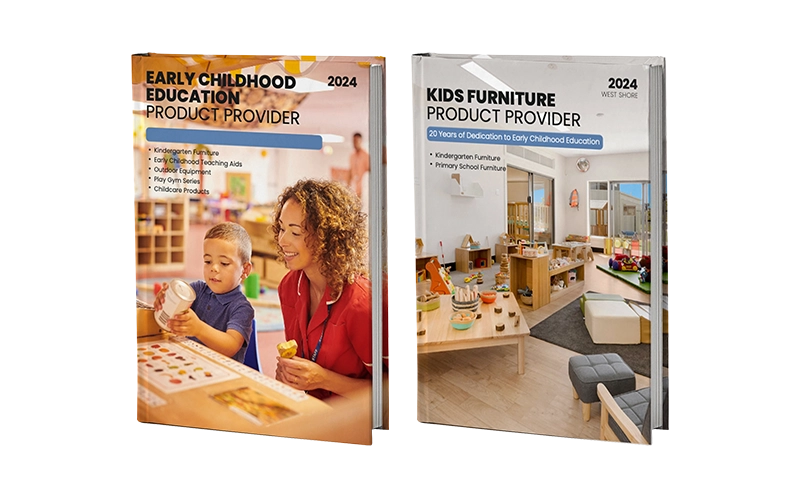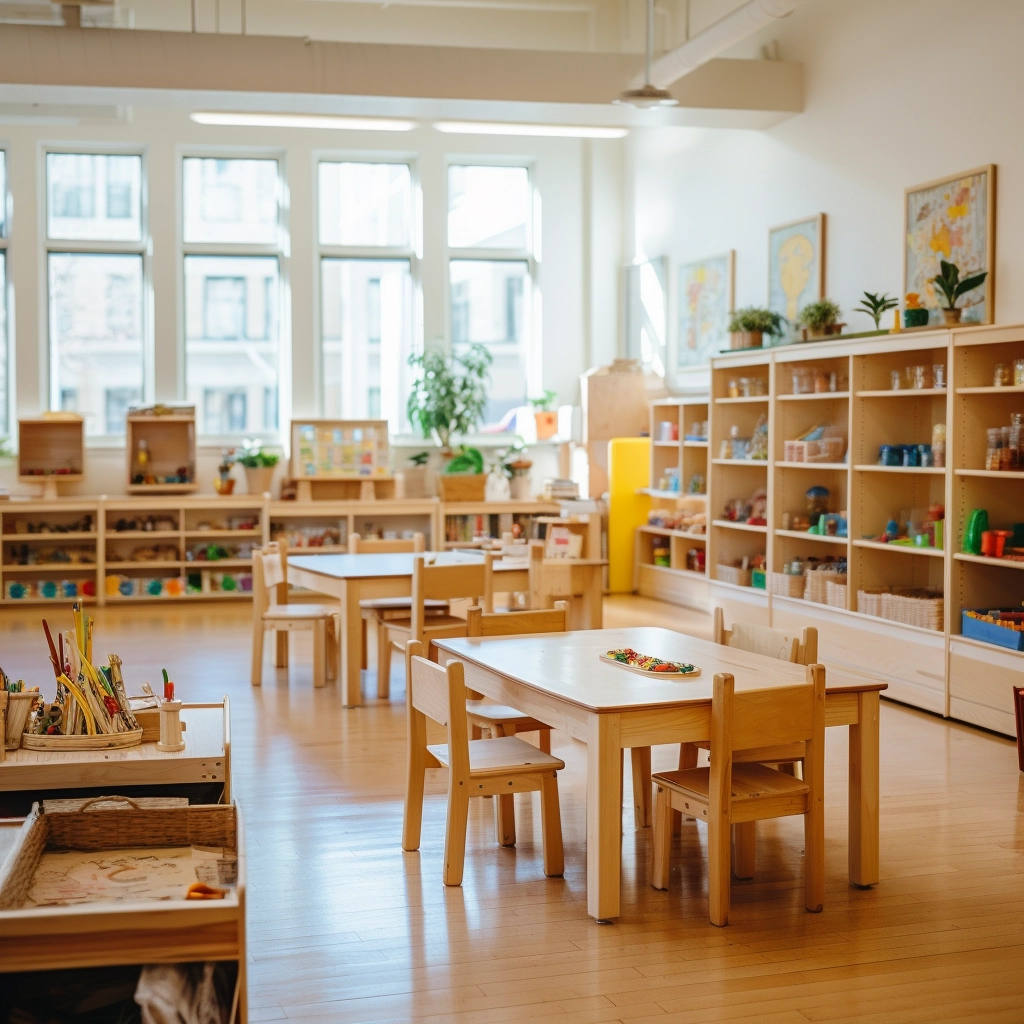What makes a preschool classroom design truly supportive of young children’s growth? Is it the cheerful colors, the child-friendly furniture layout, or the thoughtful arrangement where every corner invites children to play and learn? Designing an adequate space goes beyond decoration—it’s about crafting an environment where children feel safe, engaged, and free to explore.
In 2025, educators must carefully consider essential Preschool Classroom Setup factors to achieve a balanced space that supports safety, active learning, and flexibility. A well-designed classroom takes into account how children move, interact, and grow—encouraging independence, social development, and natural curiosity through purposeful design choices.
This article explores the six most important elements of modern preschool classroom design, helping you build a learning environment that meets the needs of both children and teachers.

What Makes a Good Preschool Classroom Setup?
“Environment is the third teacher.” — Loris Malaguzzi, founder of the Reggio Emilia approach.
When it comes to early childhood education, the classroom is not just a backdrop—it’s an active participant in a child’s learning journey. A well-designed preschool classroom is like a gentle guide: it speaks without words, invites without pressure, and teaches without lecturing.
Imagine a space where every shelf, rug, and corner quietly encourages curiosity, cooperation, and confidence. Like a garden prepared for growth, a good preschool setup doesn’t overwhelm—it nurtures. It offers children the freedom to move, the safety to explore, and the structure to thrive.
To achieve this balance, educators must thoughtfully consider key Preschool Classroom Setup Factors—those foundational elements that make a space functional and inspiring. In the following sections, we’ll explore six essential factors that shape a preschool classroom into a place where both learning and childhood can flourish.
Preschool Classroom Setup Factor 1:Physical Space
The physical space in a preschool classroom is not merely about square footage—it is the architectural foundation of a child’s learning journey. A well-designed layout does more than organize furniture; it shapes how children move, interact, focus, and explore within the environment.
A practical classroom layout balances openness and boundaries. Children should have enough room for indoor activities—such as block play, circle time, and dramatic play—while still experiencing a sense of structure through clearly defined zones. For example, large open spaces encourage collaboration and group exploration, while smaller, bordered areas like a reading corner or art station promote focus and calm.

Flexibility is key. Incorporating lightweight, movable furniture allows teachers to adapt the space for different purposes throughout the day. A classroom that can transition smoothly from active movement to quiet reflection supports a wide range of learning styles and energy levels.
Design also plays a role in managing noise levels and acoustics, ensuring that the environment remains calm and conducive to focused learning. Moreover, natural light and access to outdoor learning spaces can expand the sense of space and bring in sensory richness that deepens engagement.
In short, the physical environment becomes an active facilitator—encouraging independence, guiding behavior, and supporting developmentally appropriate learning throughout the day.
Preschool Classroom Setup Factor 2:Decor And Visual Appeal
Decorating a preschool classroom is not just about making it look attractive—it’s about creating an intentional, stimulating environment that supports learning and emotional well-being. As an essential Preschool Classroom Setup Factor, thoughtful decor can spark creativity, encourage exploration, and help children feel connected to their space.

Color and texture significantly influence how children engage with their surroundings. Bright, cheerful tones can energize the room and foster a welcoming atmosphere, while natural hues and soft textures help create a calming balance. Incorporating a mix of both allows different areas of the classroom to serve distinct purposes—some vibrant and active, others quiet and soothing.
Visual elements should serve both aesthetic and educational purposes. Alphabet charts, number lines, visual schedules, and thematic bulletin boards offer visual reinforcement of key concepts. Adding maps, seasonal displays, or learning posters turns blank walls into meaningful learning tools.
Decor should also be personal and purposeful. Featuring children’s artwork, family photos, or classroom projects promotes a sense of ownership and belonging. These visual displays affirm each child’s value and contributions to the classroom community.
In short, Preschool Classroom Setup decisions about decor should balance beauty, function, and meaning—creating a visually rich space that nurtures imagination and learning every day.
Preschool Classroom Setup Factor 3:Age-Appropriate Furniture And Equipment
Choosing age-appropriate furniture and equipment is essential for creating a classroom that supports both safety and development. Preschoolers require furnishings that match their physical size, developmental abilities, and growing need for autonomy. Every chair, table, and shelf should contribute not only to comfort but also to learning and independence.

Well-designed preschool furniture should be low in height, sturdy, and free of sharp edges. Tables and chairs should allow children to sit with their feet flat on the floor and arms resting comfortably, promoting proper posture and reducing fatigue. Storage units and shelves must be within easy reach, encouraging children to access and return materials independently—an essential part of building responsibility and routine.
Montessori-style furniture is a popular choice in early childhood settings, as it emphasizes child accessibility and functional simplicity. Open shelving, child-sized sinks, and light, movable pieces help create an environment where children feel in control of their learning space.
When it comes to equipment and materials, selections should align with children’s cognitive, sensory, and motor skill development. Items such as tactile toys, manipulatives, child-safe art supplies, and simple tools like scissors or brushes should be safely usable without constant adult assistance.
In short, appropriate furniture and equipment do more than fill a room—they empower children to move, choose, and participate in daily activities with confidence and ease.
Preschool Classroom Setup Factor 4:Safety and Accessibility
A critical Preschool Classroom Setup Factor is ensuring both safety and accessibility throughout the learning environment. Young children thrive in spaces where they can move freely, explore confidently, and engage with materials without unnecessary risks.

To ensure safety, classrooms should be free of tripping hazards, with walkways kept clear and open. All furniture should have rounded edges and be made of non-toxic, durable materials. Electrical outlets must be covered, and heavy items should be securely anchored. Regular safety inspections help maintain a hazard-free space and ensure compliance with early childhood safety standards.
Accessibility is equally essential. Young children should be able to reach learning materials, use furniture, and navigate between activity zones without adult intervention. This means providing low, open shelves, step stools, and marked paths. Doorways, bathrooms, and sinks should accommodate all learners, including those with mobility challenges.
Adequate supervision is also part of this Preschool Classroom Setup Factor. Teachers should be able to see every corner of the room without obstruction, allowing for both freedom and guidance. Low dividers and open layouts support clear visibility while still creating defined learning zones.
By prioritizing both safety and accessibility, educators create an inclusive and secure environment where children are free to explore, take initiative, and participate fully in daily activities—laying the foundation for confident and independent learning.
Preschool Classroom Setup Factor 5:Organizing Learning Areas
A well-organized classroom creates a predictable, calm, and productive environment. Clear organization not only helps teachers manage the space efficiently, but it also empowers children to take ownership of their surroundings. Children develop a stronger sense of responsibility, independence, and focus when everything has a place and every area has a purpose.
Effective preschool classrooms are typically divided into distinct learning zones, each tailored to a specific type of activity.
Common Preschool Classroom Learning Zones include:
- Reading Area – A cozy, quiet space with books and cushions for independent or shared reading.
- Dramatic Play Area – A role-play space with costumes and props to support imaginative storytelling.
- Art & Creativity Area – For drawing, painting, and crafting with child-accessible materials.
- Sensory Play Area – With sand, water, or textured items for hands-on exploration.
- Block & Construction Area – For building with blocks or manipulatives to support fine motor skills.
- Math & Manipulatives Area – Featuring counting, sorting, and logic-based tools.
- Science & Discovery Area – Includes nature objects, magnifying tools, and simple experiments.
- Writing & Literacy Center – Stocked with paper, pencils, and tracing tools for early writing practice.
- Quiet Corner – A soft, calm area for rest and emotional self-regulation.
- Group Meeting Area – A carpeted space for circle time, songs, and teacher-led instruction.

To support children’s independence, make sure materials in each area are clearly labeled and within easy reach. Use open shelves, see-through bins, and picture cues to help even the youngest learners clean up and navigate the classroom with confidence.
Preschool Classroom Setup Factor 6:Budgeting
When designing your preschool classroom setup, budgeting is a critical factor. While you may want the best furniture and decor, balancing quality and cost is essential.
Start by prioritizing essential items such as preschool furniture, storage solutions, and educational tools. Classroom design on a budget can still be beautiful and functional—look for cost-effective alternatives that meet safety standards and serve multiple purposes.
Don’t forget to consider long-term costs, like maintenance, cleaning supplies, and future updates to the classroom. A good preschool classroom setup should be cost-effective in the short term while providing a quality learning experience.
Conclusion
In conclusion, creating an effective preschool classroom setup involves careful consideration of several factors. Every detail is essential in creating an environment where children can thrive, from designing the physical space to choosing age-appropriate furniture and ensuring proper hygiene. Whether you’re implementing Montessori principles or other teaching methods, the appropriate setup will foster exploration, creativity, and a love for learning.
By carefully considering space, decor, furniture, health, organization, and budgeting, you can create a preschool classroom that is both functional and inspiring. At West Shore Furniture, we specialize in providing high-quality preschool furniture designed to meet the needs of early childhood education environments. With over 20 years of industry experience, we offer a one-stop service, from classroom design and custom furniture to production, quality inspection, and delivery. Our wide range of preschool furniture is available in various styles, materials, and sizes to suit your needs, helping you create the perfect learning space for young minds.
Whether you are looking for Montessori-inspired furniture or other educational setups, West Shore Furniture supports you with professional, reliable service. It ensures your preschool classroom is safe, engaging, and effective for years.
FAQs
1. How can decor support early childhood development in preschool classroom setup?
Decor and visual appeal in a well-planned preschool classroom setup help reinforce learning through visual cues, support emotional security, and encourage engagement by creating an inviting, child-centered environment.
2. Can too much visual decoration negatively impact a preschool classroom setup?
Yes. Overloading a space with decor can cause visual clutter and overstimulation. A balanced approach to decor and visual appeal ensures the preschool classroom setup remains calm, focused, and developmentally appropriate.
3. What are cost-effective ways to enhance decor and visual appeal in a preschool classroom setup?
Incorporate student artwork, use recyclable materials, and create simple DIY displays to enrich decor and visual appeal while keeping your preschool classroom setup affordable and engaging.






